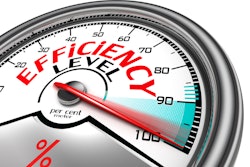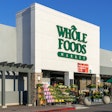
Improved production processes have largely decreased the environmental footprint of dairy products throughout the past 50 years, according to data from the U.S. Department of Agriculture (USDA). But increased consumption of dairy products means the industry's total environmental impact continues to worsen.
The greenhouse gas intensity of the average dairy farm — the amount of climate-warming emissions produced by a single unit of a product such as milk — has decreased 42% since 1971, according to the USDA analysis, which was published last month in the Journal of Dairy Science. Despite this progress, the industry's total emissions increased 14% over the same period, according to the USDA.
Those seemingly conflicting numbers can be explained by taking a closer look at just how the dairy industry has achieved the bulk of its environmental gains during the last 50 years, said Alan Rotz, an agricultural engineer with the USDA's Agricultural Research Service, and the lead author on the report. Most of the environmental gains in the sector are a result of dramatic improvements in efficiency; the industry now produces more milk with about 30% fewer cows than it did in 1971.
Because it can produce more milk with fewer cows, the average dairy farm also uses 54% less fossil-based fuel, such as gasoline, than in 1971. The release of other pollutants, including methane, volatile organic compounds, and runoff of nitrogen and phosphorus has also declined.
But because the dairy industry's total output has grown since 1971, its total emissions have continued to rise in spite of increased efficiencies. If the dairy industry is serious about its commitment to achieve carbon neutrality by 2050, Rotz said, it will need to identify and implement additional solutions that will allow it to get ahead of the growth curve.
“The intensity is already there, but it really needs to be total,” Rotz said. “That's what net zero is, for any industry and whoever is talking about it. The definition of net zero is no greenhouse gas impact, no impact on global warming.”
Rotz said there are technologies coming online today, including aerobic digestion and feed additives that can inhibit the production of enteric methane, that could go a long way to helping the industry achieve carbon neutrality.
But there is one trouble spot, Rotz said: The dairy industry's use of water has increased by 42%, or 28% per unit of milk produced. It's not clear exactly why this is, he said, but it appears to be related to the migration of dairy farms from the eastern side of the country to the west, where farms rely more heavily on irrigated crops for feed. This movement could be a result of rising land costs, Rotz said.













